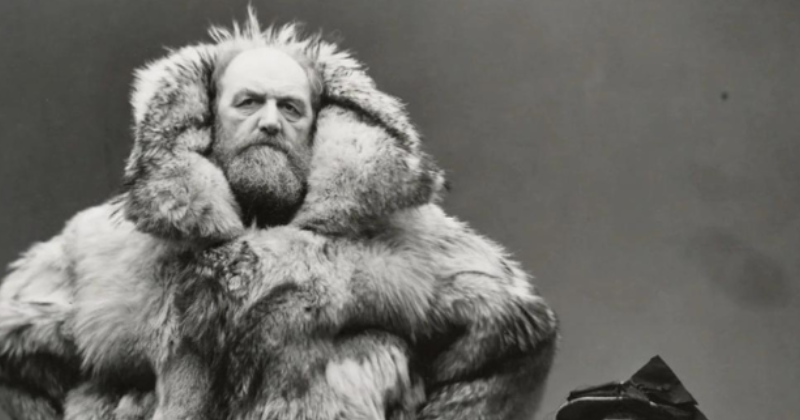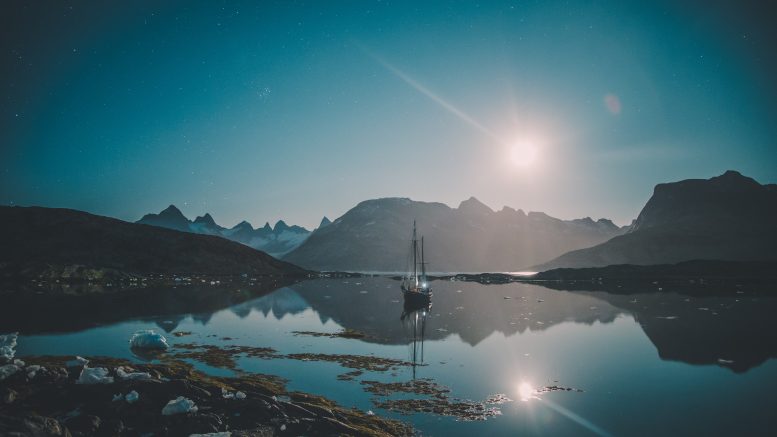Mitenbuler’s third nonfiction outing is stellar, bringing an eccentric personality back from the veil
It’s getting hard to predict what path Reid Mitenbuler will take his writing down from one tome to the next, but there seems to be a through-line pulling him along so far – learning from those who chase the possibilities of creative transgression. In the brilliant nonfiction book “Wanderlust” Mitenbuler brings that attraction to lively and enthralling new heights.
There’s a story to his story: On an evening in 2015, Mitenbuler stepped into a century-old mansion in New York called The Explorer’s Club. A friend was touring him through its ornate, antique weirdness. The whiskies Mitenbuler planned to enjoy in this memory-den were perfectly in form for the author of “Bourbon Empire,” his debut on how American spirits saved themselves from decline by reaching for craft, lineage, marketing and myth-making. That tale included highlighting how a small group of distillers found inventive ways to keep their art alive through the darkest days of Prohibition. Such renegade sensibilities were also on display for Mitenbuler in the Explorer’s Cub, which is a throwback to a time when citizen-scientists went embarking on perilous, half-crazed missions while seeking glory. As Mitenbuler made his way along the clutter of outlandish oddities those trekkers left behind, he found himself in the club’s Trophy Room.
In there a portrait caught his gaze.
“A bizarre rendering that looked like it was painted by a drunken sailor aboard a storm-tossed ship,” is how Mitenbuler describes it. “The brushwork was amateurish, the proportions clumsy, the perspective askew. But despite the awkward craftsmanship, the main in the portrait demanded my attention: he was impeccably dressed but sported a wild beard, a pirate’s peg leg, and had a mischievous, slightly amused expression. Everything about his appearance implied a good story, maybe even a fantastic story.”
The man in the frame was Peter Freuchen, a mostly forgotten adventurer from Denmark who’d often risked his life between 1906 and 1926 to chronicle the geography and native cultures of Greenland.
Though Mitenbuler was transfixed by the image, he didn’t immediately start chasing Freuchen’s ghost. His next few years were spent researching and hammering out the paragraphs of “Wild Minds,” a loving tribute to the Devil-may-care attitudes of America’s earliest cartoon-makers. It was a book that won him notice after its release in 2020. I first met Mitenbuler then, and during our interview he mentioned toiling away on a major project about the Arctic. It seemed like an unlikely topic for the author of “Wild Minds” and “Bourbon Empire.” But it turned out that Mitenbuler had never stopped thinking about that night in the Explorer’s Club. This is fortunate for readers because “Wanderlust” has given Mitenbuler a canvas broad enough to flex the full range of his writing style. Those acquainted with his work know he can tell a good story: Now, anyone diving into “Wanderlust” will see just what kind of prose-painting he can do around the past. The result is an addictive rabbit hole of nonfiction, one that has all the hallmarks of what Lit fanatics love about Erik Larson, Jon Krakauer and David Grann, without being derivative of any of those artists.
Part of this accomplishment seems born in the two main subjects of “Wanderlust” – Peter Freuchen and that Arctic itself.

Even for a Scandinavian, Freuchen was a physically imposing man. In fact, he was almost a Frost Giant from the foggy Viking lore of his youth . Yet, what Mitenbuler found was that, under Freuchen’s mighty exterior, was a cerebral, poetic, forward-thinking personality with somewhat gentle instincts. That did not mean he wasn’t tough. Or occasionally reckless. At the dawn of a new century, a young Freuchen stepped onto deck of a sailing vessel to head into the unknown on the first of many excursions through the wilds of Greenland. Time and again, Freuchen would test his luck against the most unforgiving conditions on earth, harrowing moments that Mitenbuler depicts through his visceral descriptions, narrative flourishes and deft plotting around true-life events.
The Arctic, on the other hand, is its own spell-binding presence in “Wanderlust.” Mitenbuler is not the first author to attempt to explain why curious souls risk everything in the most remote corners of the world; but the astounding amount of research he did for this book, coupled with his own deep contemplation of what he found in letters and diaries, help convey the luminous, soul-crushing sublimity of the earth’s most merciless form of beauty – and how it addicts those encountering it.
With all the wintry wonders captured in this story, a reviewer could be tempted to write about it in November rather than the summertime. However, “Wanderlust” is also a jaunt through the warm California mornings and nights that Hollywood’s first crop of stars basked in. If Peter Freuchen was looking for a stranger atmosphere than the Arctic’s forever-light, he found it in the pinnacle of Tinsel Town’s studio system of the 1930s. His fate-defying feats led to a career as a novelist. The adventure yarns Freuchen wrote sold on both sides of the Atlantic, partly thanks to his knowledge of uncharted territories and remote Inuit cultures. The more ambitious filmmakers at Paramount and MGM began to take notice. They eventually invited the Dane to write storylines for them.
Mitenbuler, who lives in Los Angeles, threw himself into uncovering how his Scandinavian strongman fit into Hollywood’s golden era. He poured through the archives of grey and long-shuttered trade publications. He read through numerous accounts hat the talent of this period left behind. What emerges in the “Wanderlust” is how easily an outcast from the land of ice and snow fit into a chaotic illusion factory filled with outcasts from everywhere else. For fans of Old Hollywood, this is a fun section of the book as Mitenbuler describes how Freuchen rubs elbows with studio moguls, pre-Code vixens, literary giants-turned-script doctors and at least one notorious fixer who’s since been portrayed in the films Hollywoodland and Hail, Caesar! Throughout it all, Mitenbuler captures the rogue, haphazard extravagance of a certain time and place, mirroring the motifs of Damien Chazelle’s recent Babylon, though keeping his own narrative totally grounded in reality.
Freuchen continued his links to the entertainment industry for the rest of his life, but the true heart of the story Mitenbuler is telling involves an insatiable interest in every aspect of the world. There are some people who are born to never stop moving, never stop learning, never stop connecting with other people and places. They have the curse and blessing of Wanderlust. Not all of them justify having a 400-page emotional communion with; but in his latest book, Mitenbuler has given us one who does.
Scott Thomas Anderson is also the writer and producer of the documentary podcast series ‘Drinkers with Writing Problems.’


Be the first to comment on "The deadly allure of Arctic light meets sunshine and California dreams in new book ‘Wanderlust’"